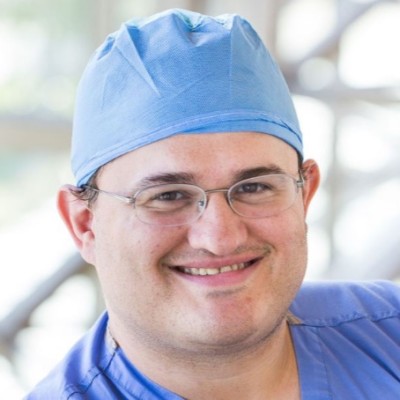- Video Library
- Michael Sughrue Presents Omniscient Neurotechnology at LSI USA '24
Michael Sughrue Presents Omniscient Neurotechnology at LSI USA '24

Michael Sughrue
Driven to improve the world around him, Dr. Michael Sughrue has continually pursued ways to educate, inspire, and mentor those around him. He is an esteemed neurosurgeon and neuroscientist who has authored over 250 publications and mentored 70 pre-doctoral candidates. Pursuing entrepreneurial ventures grounded in technological innovation for healthcare, Michael co-founded Omniscient Neurotechnology, an organization helping medical professionals utilize complex brain network data to deliver enhanced patient care. He currently serves on the executive team as Chief Medical Officer and sits on the Board of Directors.
He is also the founder of Cingulum Health, a clinic focused on providing treatment options for neurological conditions and mental illness, and since 2018, he has worked at Prince of Wales Hospital as a neurosurgeon. Prior to his current role, Dr. Sughrue served as the Director of the Brain Tumor Center, building the department to a top 5 clinic within six years of leadership. Additionally, Michael has served as a visiting Fellow for the Department of Neurosurgery at the University of South Wales and joined the Department of Psychiatry at the University of Cambridge as Visiting Researcher and the Garvan Institute in Sydney, Australia as a Visiting Scientist.
Receiving multiple accolades, including the Ronald L. Bittner Award 2010 from the American Association of Neurological Surgeons and the Rosegay Award 2011 from the San Francisco Neurological Society, Michael has dedicated his life to pursuing ways to improve patient care and health through his research, publications, and most recently, his growth in leadership with Omniscient Neurotechnology.
Michael Sughrue
Driven to improve the world around him, Dr. Michael Sughrue has continually pursued ways to educate, inspire, and mentor those around him. He is an esteemed neurosurgeon and neuroscientist who has authored over 250 publications and mentored 70 pre-doctoral candidates. Pursuing entrepreneurial ventures grounded in technological innovation for healthcare, Michael co-founded Omniscient Neurotechnology, an organization helping medical professionals utilize complex brain network data to deliver enhanced patient care. He currently serves on the executive team as Chief Medical Officer and sits on the Board of Directors.
He is also the founder of Cingulum Health, a clinic focused on providing treatment options for neurological conditions and mental illness, and since 2018, he has worked at Prince of Wales Hospital as a neurosurgeon. Prior to his current role, Dr. Sughrue served as the Director of the Brain Tumor Center, building the department to a top 5 clinic within six years of leadership. Additionally, Michael has served as a visiting Fellow for the Department of Neurosurgery at the University of South Wales and joined the Department of Psychiatry at the University of Cambridge as Visiting Researcher and the Garvan Institute in Sydney, Australia as a Visiting Scientist.
Receiving multiple accolades, including the Ronald L. Bittner Award 2010 from the American Association of Neurological Surgeons and the Rosegay Award 2011 from the San Francisco Neurological Society, Michael has dedicated his life to pursuing ways to improve patient care and health through his research, publications, and most recently, his growth in leadership with Omniscient Neurotechnology.

17011 Beach Blvd, Suite 500 Huntington Beach, CA 92647
714-847-3540© 2025 Life Science Intelligence, Inc., All Rights Reserved. | Privacy Policy







